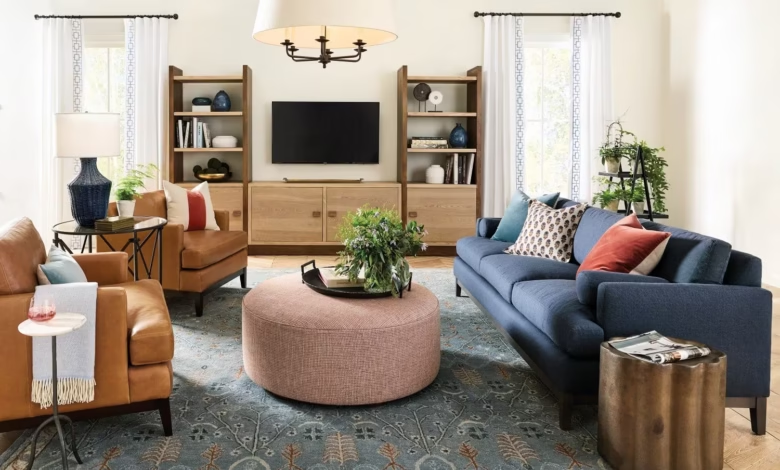From Entryways to End Tables: Designing a Cleaning Flow That Matches Your Space

Cleaning is often viewed as a checklist—something to “get through” rather than optimize. But what if cleaning could follow a flow as intuitive as the way we walk through a room? Designing a custom cleaning sequence that aligns with how your space is used can reduce effort, improve consistency, and produce a more satisfying result.
Whether you’re managing a residence or overseeing a workplace, creating a structured yet flexible cleaning flow not only makes the job easier—it makes it more effective.
Let’s walk through how to rethink your approach, room by room, from the front door to the finer details.
The Importance of Spatial Awareness
Before breaking out the supplies, take a moment to observe how your space functions. Is there a central traffic zone? Are certain rooms used more heavily than others? Is furniture arranged tightly or spaced wide?
Understanding how people move through your space helps prioritize what gets cleaned first—and how frequently. For example, in homes, the kitchen and entryway often take the most wear. In office buildings, it’s the front lobby and shared restrooms.
Good cleaning isn’t just about repetition; it’s about responding to real use.
Entry Points and Transition Zones
Every cleaning flow should start at the entry. This is the first and last place people interact with your environment, and it sets the tone for what follows.
Focus areas here include:
- Doormats (indoor and outdoor): Shake or vacuum to remove tracked-in dirt
- Floors and baseboards: Clean these early to reduce spreading particles
- Light switches and door handles: Wipe down to reduce bacteria buildup
Dust and debris tend to settle here quickly, so addressing it first prevents it from being moved into interior areas during cleaning. For homes and businesses alike, this is the foundation of a good routine.
Kitchens and Food Areas: Function First
Kitchen zones are high-traffic and high-touch, making them prime real estate for bacteria. Start from top to bottom and work outward:
- Cabinet tops and shelves: Wipe before counters to avoid drip-down
- Appliance exteriors: Sanitize handles, especially on fridges and microwaves
- Counters and cutting surfaces: Use separate cloths for food zones
- Floors: Finish with a thorough sweep and mop
This space benefits most from a daily light clean and a weekly deep clean. If you’re short on time, prioritize the high-touch surfaces and leave the inside drawers or storage for a rotational schedule.
House cleaning services often build modular cleaning plans around these food-centered areas, understanding they demand a different level of attention than a guest bedroom.
Living and Lounge Areas: Visual Impact + Health
Living rooms and reception areas may not look dirty, but they’re hubs for dust, allergens, and subtle buildup. Soft materials like curtains and cushions are dust magnets, and electronics collect fine particles quickly.
Here’s how to streamline the process:
- Declutter surfaces: Remove items for more efficient wiping
- Dust from high to low: Ceiling fans, then shelves, then surfaces
- Electronics and screens: Use microfiber cloths for gentle dust removal
- Soft furnishings: Vacuum or shake cushions; consider monthly steam-cleaning
These spaces should reflect comfort, and that means invisible cleanliness too. Scheduling regular attention prevents dust from becoming part of the decor.
Bathrooms: Micro Zones, Maximum Detail
Bathrooms seem small, but they contain multiple high-risk zones. Breaking them into sections ensures nothing gets overlooked.
Suggested order:
- Mirrors and glass
- Sinks and countertops
- Toilets and flush handles
- Showers and tubs
- Floors and baseboards
Use separate tools for each micro-zone to avoid cross-contamination. Don’t forget to check for moisture build-up in corners or behind the toilet—common spots for mold growth.
In commercial spaces, commercial cleaning services often treat restrooms as standalone units with their own materials and processes. Adopting this mindset at home improves hygiene and prevents missed details.
Offices and Workstations: Minimalism Meets Maintenance
Cleaning workspaces is about more than dust—it’s about supporting focus. Desks, monitors, keyboards, and even chair arms gather oils and germs from daily use.
Here’s a basic flow to follow:
- Clear surfaces: Stack or file documents before cleaning
- Dust monitors and peripherals
- Wipe phones, keyboards, and desk items with sanitizing wipes
- Vacuum floors last, especially around chairs and corners
For multi-person or hybrid workspaces, plan a rotating cleaning chart or a weekly appointment with a reliable cleaning company in Oklahoma City to keep consistency.
Design a Flow, Then Repeat
Consistency is key in making any cleaning strategy effective. Establish a pattern for each area and repeat it often enough that it becomes second nature. You don’t need to clean everything every day—but you should know what gets done and when.
Create a flow chart or checklist that mirrors how your rooms are arranged. For example:
- Monday: Entryway, kitchen
- Wednesday: Bedrooms, laundry areas
- Friday: Living room, bathrooms
This type of spatial rotation ensures full coverage while avoiding burnout.
Adjust for Time and Lifestyle
Not every space needs the same treatment at the same pace. Homes with pets, kids, or open-floor plans may need more frequent upkeep. Office environments with public-facing roles demand higher-frequency disinfecting.
For efficiency, match the cleaning to your real habits. If your home is busiest on weekends, schedule your deeper cleaning midweek. If your business sees clients on Fridays, plan your major cleaning for Thursday evenings.
The goal is balance—not perfection.
Beyond Janitorial: Designed for Practical Flow
Professionals like Beyond Janitorial understand that no two spaces are alike. Whether it’s a home with multiple children or a business with round-the-clock operations, tailoring a cleaning sequence to fit the environment makes cleaning more sustainable and far less overwhelming.
Good flow isn’t just about order—it’s about understanding. And when cleaning follows the same paths that people take every day, the results are cleaner, healthier, and easier to maintain over time.
A Space That Works Cleanly
You don’t need to overhaul your space to clean it better. You just need to clean with intention.
Designing your cleaning flow to follow your layout, activity, and lifestyle ensures that each effort counts and no energy is wasted. From entryways to end tables, the path to a cleaner environment starts with how you approach it.
Cleaning doesn’t have to feel endless. When done in the right order, with the right rhythm, it becomes part of how your home or business supports the people inside it—one step, one room, one day at a time.




